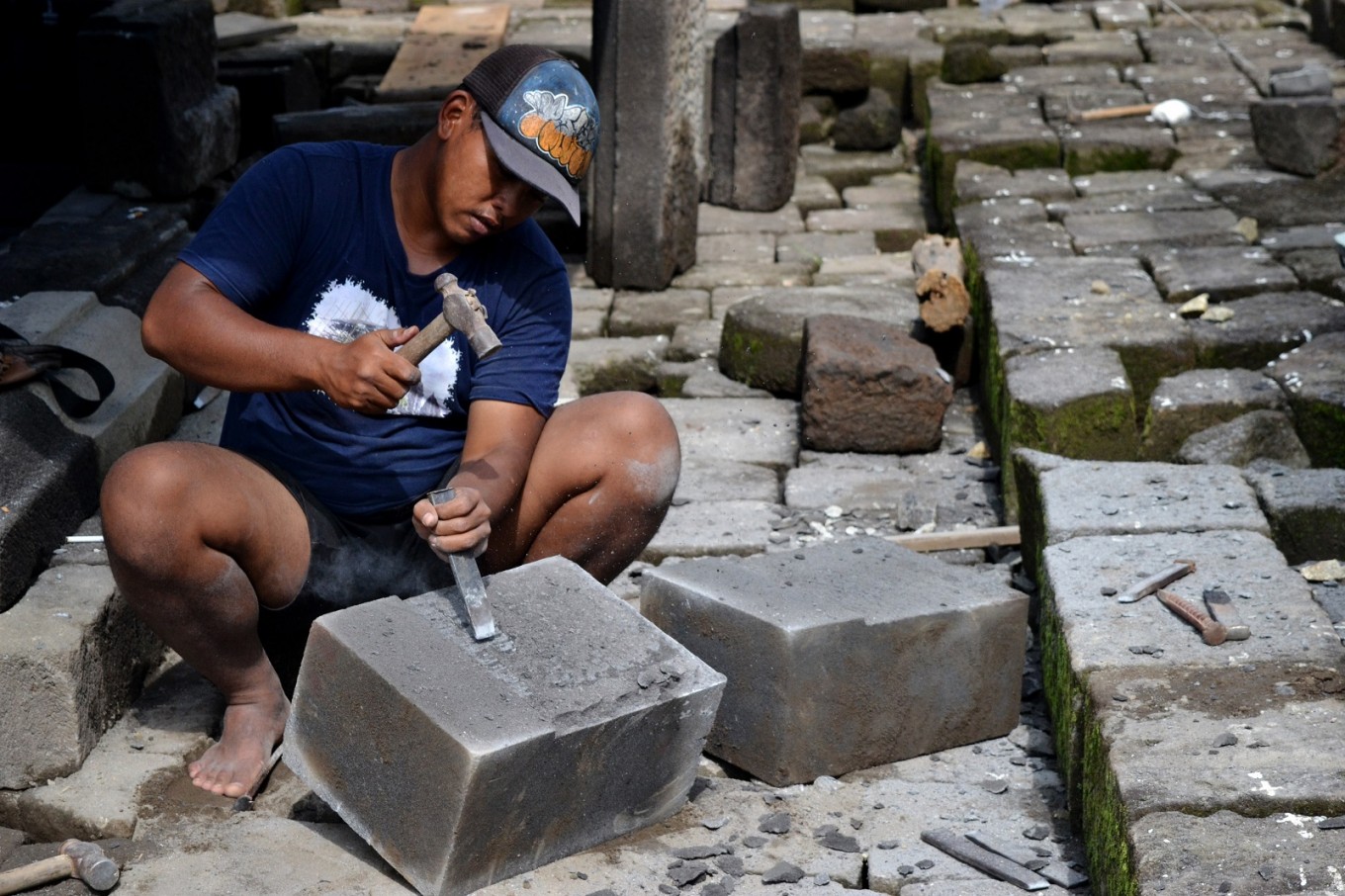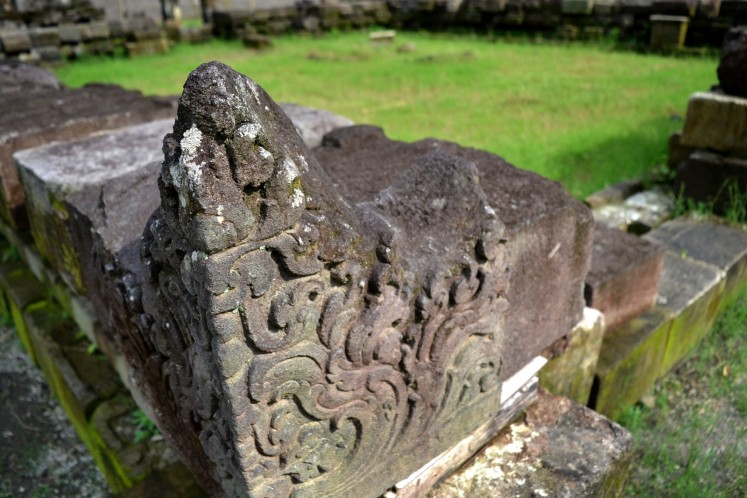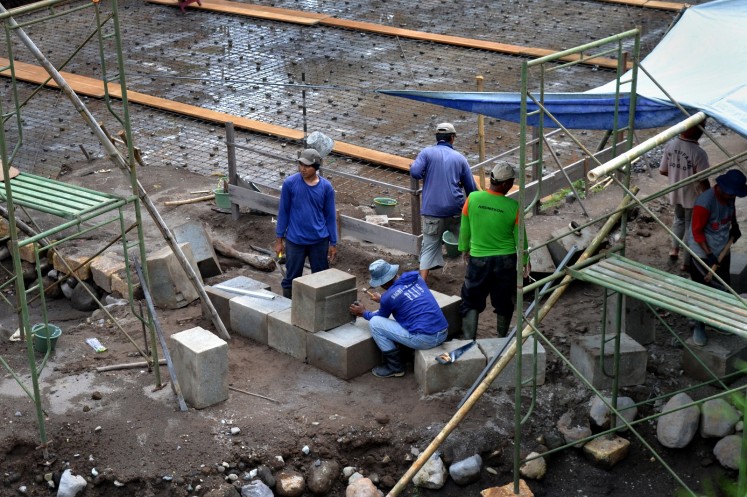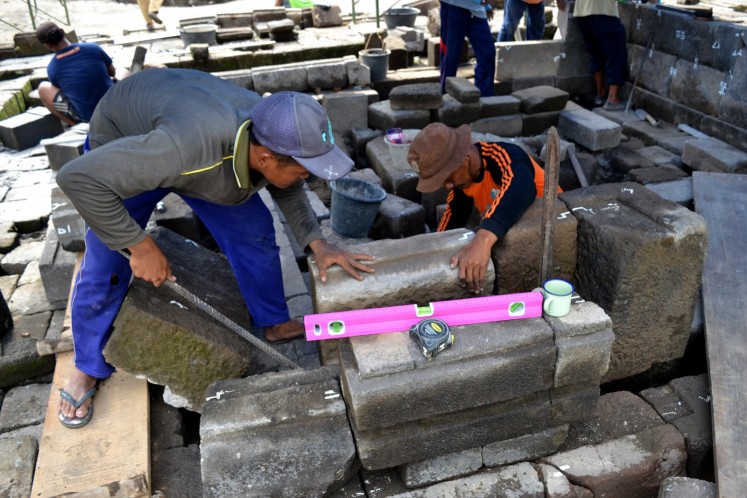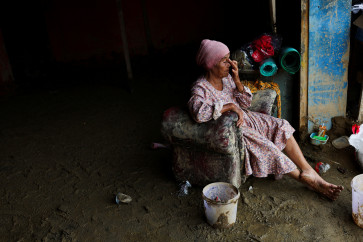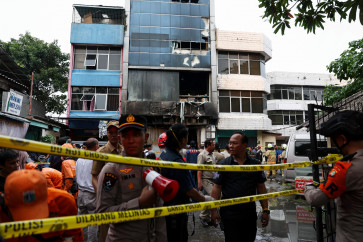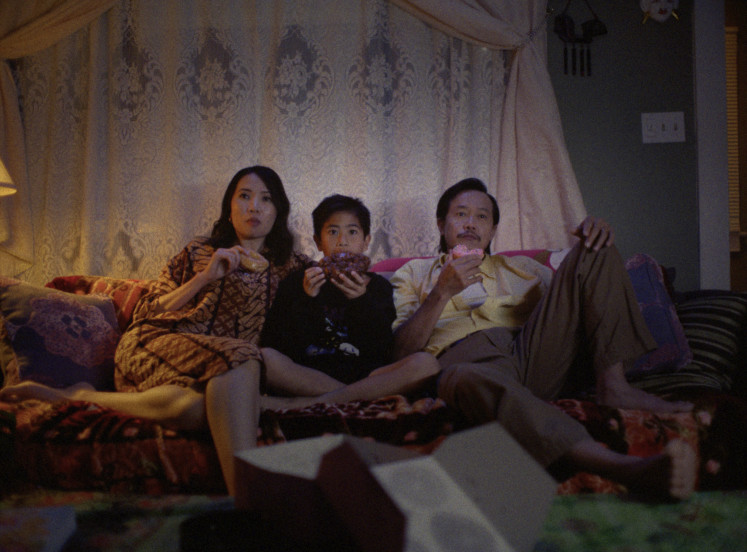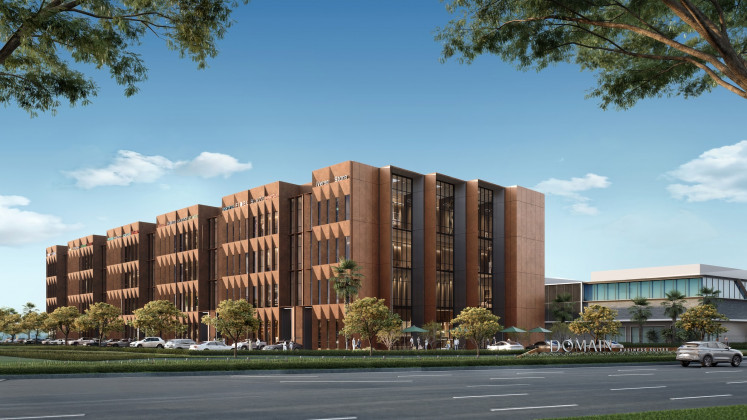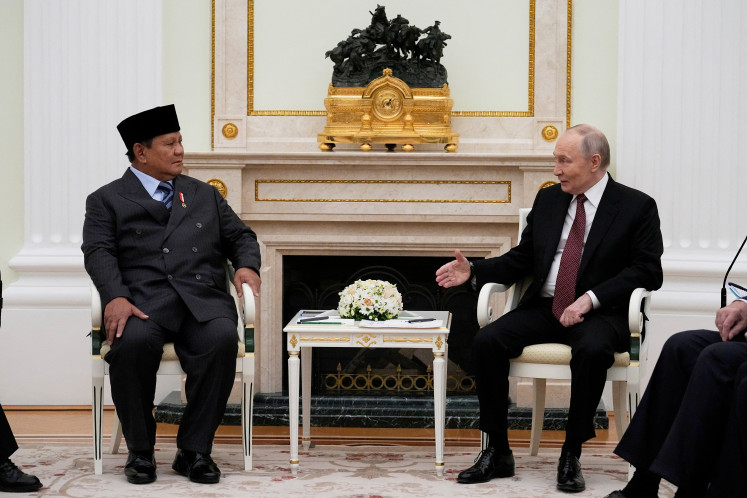Popular Reads
Top Results
Can't find what you're looking for?
View all search resultsPopular Reads
Top Results
Can't find what you're looking for?
View all search resultsKedulan Temple restoration enters anastylosis phase
Discovered by sand miners in 1993, the restoration of the 9th century Kedulan Temple complex is expected to be completed by the yearend to stand as a new icon of cultural and educational tourism attraction.
Change text size
Gift Premium Articles
to Anyone
B
uried for centuries under layers of volcanic material, restoration work began on Kedulan Temple in January. The temple is located in Tirtomartani village of Yogyakarta's Sleman regency and was discovered by sand miners on Nov 24, 1993.
Kedulan Temple was buried 7 meters beneath the surface, covered by 13 layers of volcanic material deposited by numerous eruptions of Mount Merapi dating back to the 9th century, when the temple was built, until its relatively recent discovery 25 years ago.
Since 1993, the Cultural Preservation Agency has continued to excavate and study the Kedulan Temple site. The agency found other sections of the temple that still lay below ground, including several statues and two inscriptions in palawa (ancient Indonesian script) bearing the year 791 year in the Javanese calendar, equivalent to 869 A.D.
Read also: Yogyakarta to attract tourists to Kulon Progo tea hamlets
A close-up shot reveals the carvings on a stone block of the Kedulan Temple, which will be reunited with the rest of the stone blocks in reconstructing the temple. (Stefanus Ajie/Stefanus Ajie)The Kedulan Temple site measures approximately 14-by-14 meters and a height of 8-9 meters. The Hindu temple complex consists of a main temple and three perwarna (small temples) and holds the statue of Lembu Nandi and Lingga Yoni. The structural design is similar to other nearby Hindu temples, such as the Ijo Temple and Sambisari Temple, both of which were built to worship Shiva, one of the principle Hindu deities.
The smaller temples around the Prambanan Temple complex are believed to be houses of worship in the rank of Raka, a government unit of the Mataram Hindu Kingdom, also known as the Medang Kingdom.
Workers at the Kedulan site prepare to build a reinforced foundation to support the temple structure. (Stefanus Ajie/Stefanus Ajie)Kedulan Temple is being restored by a archeological team from the Yogyakarta Institute for Preservation of Cultural Heritage (BPCB) that consists of 75 archeologists, restoration specialists and workers. Before the actual restoration work began in January, the team performed a number of technical tests on the site.
A temple is considered fit for restoration if more than 80 percent of the original structural materials are available and every layer of the temple’s structure is clearly represented.
Once the stone blocks were discovered and grouped according to type, the Kedulan Temple entered the anastylosis phase, during which the temple is reconstructed using the original architectural elements to the greatest extent possible. The recovered stones are rearranged in a temporary location in a manner no different than trying to build a giant three-dimensional puzzle, and are marked on each side to make it easier to reassemble them at the actual site.
Read also: Foreign traveler’s search for her Yogyakarta hero goes viral
Members of the special anastylosis team reassemble the temple structure at a location adjacent to the Kedulan site. Once their placement has been determined and confirmed, the blocks will be moved to the actual site to reconstruct the temple, block by block. (Stefanus Ajie/Stefanus Ajie)One of the members of the anastylosis team is Yudi Royani, 58, a former BPCB Yogyakarta specialist, now retired. With over 37 years of experience in temple restoration, Yudi explained that the anastylosis phase required a great deal of precision. “Reconstructing a temple means we have to understand the shape and character of each stone. They need to be placed exactly where they belong in the original structure. A small shift would mean disaster,” he said.
While the reconstruction is under way, another team is building a reinforced foundation for the main temple. The foundation must be strengthened to stabilize the temple structure and protect it from the ongoing water erosion. After the work on the foundation is finished, the temple will be rebuilt using the construction methods of centuries past.
The restoration of the entire Kedulan Temple complex is expected to be completed by the end of 2018. The temple will then be opened to the public as a place of worship as well as for educational and tourism purposes. The restored Kedulan Temple is also expected to have a positive impact on the welfare of the people living around the temple, particularly through the tourism sector. (mut/kes)

